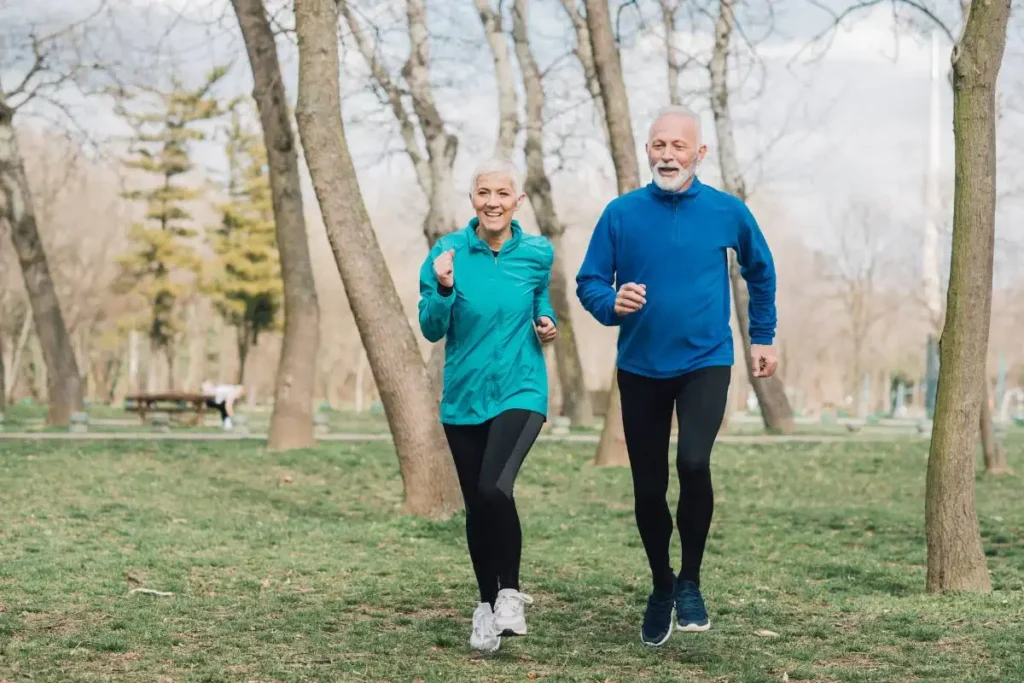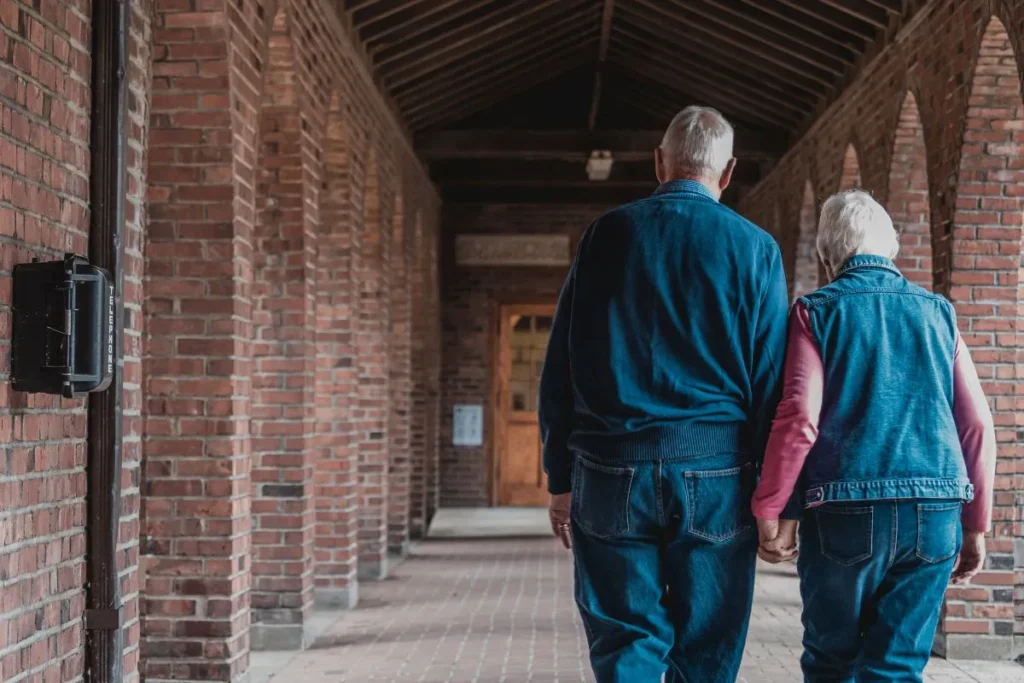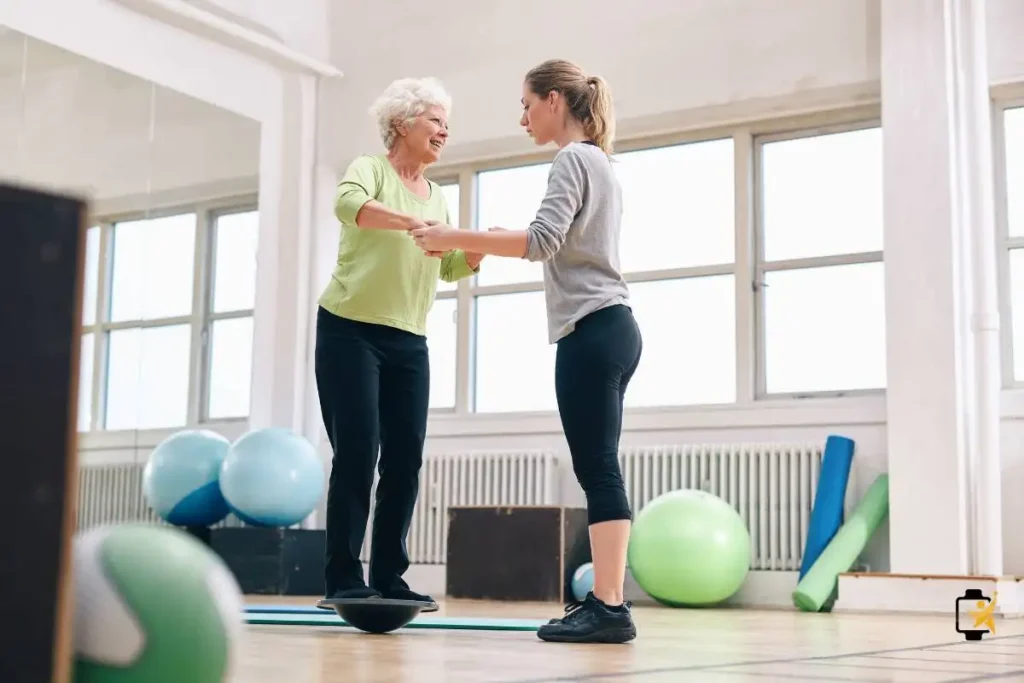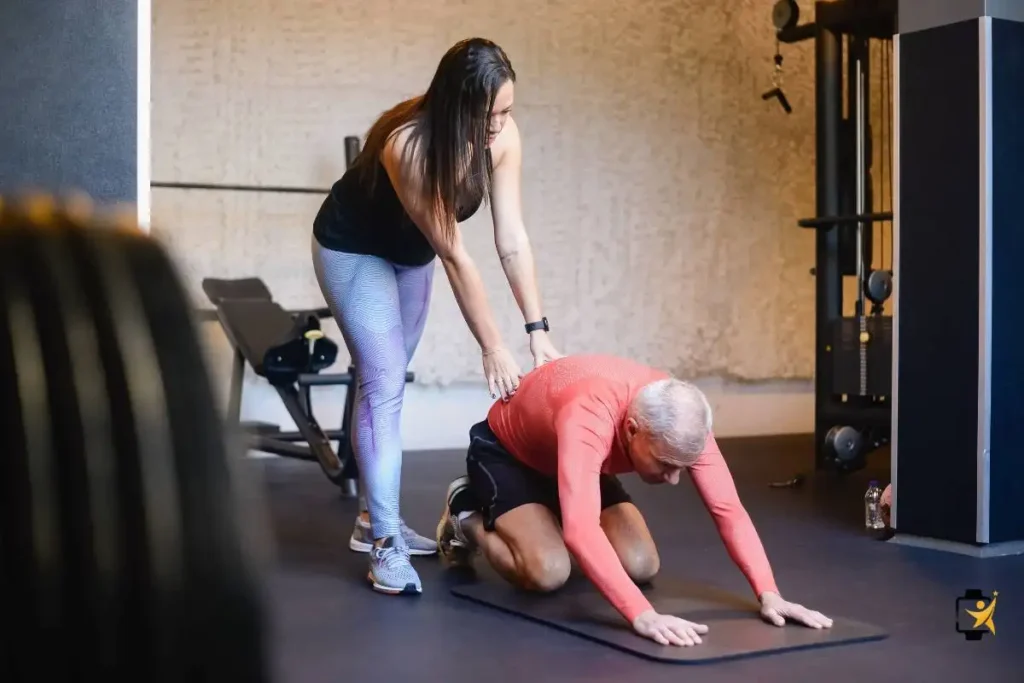Walking is a game-changer for seniors. It’s low-impact, doesn’t cost a dime, and you can do it pretty much anywhere. But finding the right spot can make all the difference between a ho-hum stroll and an invigorating journey.
Health Benefits of Regular Walks
Walking is not just about getting from A to B. It’s a full-body tune-up. It gets your heart pumping, keeps your joints flexible, and even boosts your mood. Plus, it’s a great way to keep your weight in check without hitting the gym.
Many of my older clients have found that regular walks help them sleep better at night and feel more energized during the day. And let’s not forget the social aspect – walking with friends or in a group can be a fantastic way to stay connected and have a laugh or two.
Choosing the Right Walking Spot
When it comes to picking the best places for seniors to walk, there’s no one-size-fits-all answer. What works for one person might not work for another. You’ve got to consider things like terrain, accessibility, and safety.
Flat surfaces are generally easier on the joints, while paths with some gentle inclines can provide a bit more of a challenge if you’re up for it. Look for places with benches or rest areas along the way, just in case you need a breather. And don’t forget about the scenery – a beautiful view can make your walk feel less like exercise and more like a mini-adventure.
Top Indoor Walking Spots for Seniors
Let’s face it, sometimes the weather just doesn’t cooperate. Or maybe you’re not keen on dealing with uneven outdoor terrain. No worries – there are plenty of great indoor options for getting your steps in.
Shopping Malls:
Shopping malls are like indoor walking paradises. They’re climate-controlled, have smooth floors, and usually have plenty of places to sit and rest. Many malls open early for walkers, so you can get your exercise in before the crowds arrive.
Plus, you’ve got bathrooms and water fountains readily available. Some malls even have organized walking groups – a great way to meet new people while you’re getting fit. And if you’re feeling a bit peckish after your walk, you’ve got plenty of food options right there.
Community Centers and Indoor Tracks
Many communities have centers or rec facilities with indoor tracks. These are fantastic for seniors because they’re designed with safety in mind. The surfaces are usually cushioned, which is easier on your joints.
Some even have lanes designated for different speeds, so you don’t have to worry about faster walkers zipping past you. Many of these places offer senior discounts or special hours for older adults. It’s worth checking out what’s available in your area – you might be surprised at the options right in your backyard.
Outdoor Walking Destinations for the Active Senior
Now, if you’re the type who loves the great outdoors, you’re in luck. There are tons of fantastic outdoor spots that are perfect for senior walkers.
Parks and Nature Trails
Local parks and nature trails can be goldmines for senior walkers. Many have paved paths that are easy on the feet and accessible for those with mobility aids.
You get the bonus of fresh air and a chance to connect with nature. Watching the seasons change along your regular walking route can be really rewarding. Just be sure to check the trail difficulty before you set out – some nature trails can be more challenging than others. And don’t forget to bring water and maybe a small snack, especially on longer walks.
Botanical Gardens
If you’re looking for a feast for the eyes while you walk, botanical gardens are hard to beat. These places are usually well-maintained with smooth paths and plenty of benches. You can enjoy a variety of plants and flowers as you get your exercise.
Many botanical gardens offer guided tours, which can be a great way to learn while you walk. Some even have specific programs for seniors, combining gentle exercise with horticultural education. It’s like taking a mini-vacation without leaving your city.
Beach Walks
For those lucky enough to live near the coast, beach walks can be an incredible option for senior walkers.
Benefits of Seaside Strolls
Walking on the beach isn’t just about the views (though those are pretty spectacular). The sand provides a natural resistance that can help strengthen your legs and improve your balance. The sound of the waves can be incredibly calming, helping to reduce stress and improve your mental well-being.
And let’s not forget about the fresh sea air – it’s like nature’s own aromatherapy. Just be sure to walk during low tide when the sand is more compact and easier to navigate. And if you’re not up for sand walking, many beaches have boardwalks that provide a smoother surface right next to the ocean.
Safety Tips for Beach Walking
While beach walks can be amazing, it’s important to take some precautions. Always check the weather forecast before heading out – you don’t want to get caught in a sudden storm. Wear sunscreen and a hat, even on cloudy days, as the sun’s reflection off the water can be intense.
It’s also a good idea to bring a walking stick for extra stability on uneven sand. And if you’re walking alone, let someone know where you’re going and when you expect to be back. Safety first, always.
Urban Walking Routes for City-Dwelling Seniors
Living in the city doesn’t mean you’re short on walking options. In fact, urban environments can offer some of the best places for seniors to walk.
City Parks: Green Oases in the Concrete Jungle
Most cities have parks that are perfect for senior walkers. These urban green spaces often have well-maintained paths, plenty of benches, and beautiful landscaping. Many city parks also have different routes of varying lengths, so you can choose a walk that fits your fitness level and available time.
Some parks even have outdoor fitness equipment designed for seniors – a great way to mix up your routine. And the people-watching opportunities can’t be beat. You might even make some new friends along the way.
Historical Walking Tours
Why not combine your walk with a history lesson? Many cities offer self-guided or group historical walking tours. These routes are usually designed to be manageable for most fitness levels and often include plenty of stops where you can rest and learn about local landmarks.
It’s a great way to stay active while discovering more about your city’s past. Plus, if you go with a guided tour, you don’t have to worry about navigation – just follow the guide and enjoy the stories.
Walking Groups and Programs for Seniors
Sometimes, the best motivation to get moving is having others to walk with. That’s where walking groups and programs come in handy.
Benefits of Group Walking
Joining a walking group can be a game-changer for many seniors. First off, it adds a social element to your exercise routine. You get to meet new people, share stories, and maybe even make some lasting friendships. Having a set schedule can help you stay consistent with your walking habits.
Plus, walking in a group can feel safer, especially if you’re exploring new routes. Many walking groups have leaders who are trained in first aid and can provide tips on proper walking form. And let’s be honest, time flies when you’re chatting with others – before you know it, you’ve finished your walk without even feeling like you’ve exercised.
Finding the Right Walking Group
So how do you find these walking groups? Start by checking with your local senior center or community center. Many of them organize regular walking groups. Hospitals and health clinics sometimes offer walking programs as part of their community outreach.
Don’t forget to look online – websites like Meetup often have listings for local walking groups. And if you can’t find a group that suits you, why not start your own? Chances are, there are other seniors in your area looking for walking buddies too.
Treadmills and Home Walking Options
Sometimes, the best place to walk is right in your own home. Let’s talk about some options for indoor walking when you can’t (or don’t want to) head outside.
Choosing the Right Treadmill for Seniors
If you’re thinking about getting a treadmill, there are a few things to keep in mind. Look for one with extended handrails for extra stability. A low step-up height can make it easier to get on and off safely.
Some treadmills come with pre-programmed workouts designed for seniors, which can add variety to your routine. Don’t forget about noise levels – you don’t want a machine that’s going to disturb your neighbors or interrupt your favorite TV show.
And consider the size – make sure you have enough space not just for the treadmill, but also for safely getting on and off.
Walking in Place
Don’t have room for a treadmill? No problem. Walking in place is a great option that requires zero equipment. You can do it while watching TV, listening to music, or chatting on the phone. To make it more challenging, try lifting your knees higher or adding arm movements.
You can even use canned goods as light weights to get your upper body involved. The key is to find ways to make it enjoyable so you’ll stick with it. Maybe challenge yourself to walk in place for an entire episode of your favorite show, or create a special playlist that’s just the right length for your daily “walk.”
Adapting Your Walk for Different Seasons
One of the great things about walking is that you can do it year-round. But different seasons bring different challenges and opportunities.
Summer Walking
When the mercury rises, it’s crucial to adapt your walking routine. Early morning or evening walks can help you avoid the worst of the heat. Light-colored, loose-fitting clothes can keep you cooler, and don’t forget a hat and sunglasses.
Hydration is key – bring water with you, even on short walks. If it’s really hot, consider indoor options like malls or community centers with air conditioning. And always listen to your body – if you start feeling overheated or dizzy, it’s time to head for shade and cool down.
Winter Walking
Cold weather doesn’t have to mean the end of your walking routine. The key is to dress in layers – you can always remove a layer if you get too warm. Don’t forget gloves and a hat to prevent heat loss. In icy conditions, consider using walking poles for extra stability, or opt for indoor walking spots.
If you do walk outside, be extra cautious of slippery surfaces and give yourself plenty of time – it’s better to walk slowly and safely than to risk a fall. And bright or reflective clothing is a must for those shorter winter days when visibility might be low.
Technology and Apps for Senior Walkers
In this digital age, there are plenty of tech tools that can enhance your walking experience.
Step Counters and Fitness Trackers
Fitness trackers and step counters can be great motivational tools for senior walkers. They can help you set and track goals, monitor your progress, and even remind you to move if you’ve been sitting too long. Many of these devices also track things like heart rate and sleep quality, giving you a more comprehensive picture of your health.
Don’t worry if you’re not tech-savvy – many of these trackers are designed to be user-friendly. And seeing your daily step count can be a real boost, encouraging you to take that extra lap around the block.
Walking Apps for Seniors
There are loads of apps designed specifically for walkers, and many of them are senior-friendly. Some apps can help you find walking routes in your area, complete with information about difficulty levels and amenities along the way.
Others offer guided audio walks, which can make solo walks more interesting. There are even apps that turn your walk into a game, where you can earn points or unlock achievements as you go. Just remember to keep your eyes on the path, not your phone screen, while you’re walking.
Nutrition and Hydration for Senior Walkers
Proper fuel and hydration are crucial for any exercise routine, including walking.
Pre and Post-Walk Snacks
What you eat before and after your walk can make a big difference in how you feel. Before a walk, a small snack with some complex carbs can give you energy without weighing you down – think a piece of fruit with a handful of nuts, or whole grain toast with a bit of peanut butter.
After your walk, a snack with some protein can help with muscle recovery – maybe a hard-boiled egg or a small yogurt. The key is to listen to your body and find what works best for you.
And remember, walking is great for regulating blood sugar levels, so if you’re diabetic, it’s extra important to plan your meals and snacks around your walks.
Staying Hydrated on Your Walks
Hydration is crucial, especially for seniors. As we age, our sense of thirst can decrease, making it easier to become dehydrated without realizing it. Try to drink water before, during, and after your walk. If you’re going for a longer walk, consider bringing a water bottle with you.
In hot weather, you might want to add an electrolyte drink to replace what you lose through sweat. And here’s a tip: if plain water doesn’t appeal to you, try infusing it with some fresh fruit or herbs for a flavor boost without added sugars.
Conclusion
At the end of the day, the best places for seniors to walk are the ones that keep you coming back for more. Whether it’s a scenic trail, a bustling mall, or your own living room, the key is to find what works for you and stick with it. Remember, consistency trumps intensity every time. So lace up those walking shoes, grab a buddy if you like, and get moving. Your body (and mind) will thank you for it. Happy walking!





